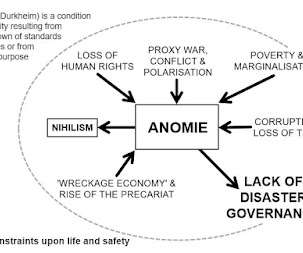Disasters: Knowledge and Information in the New Age of Anomie
Emergency Planning
JULY 29, 2019
Vast resources are now devoted to distorting the picture, and all three superpowers are busy utilising them (Druzin and Gordon 2018, Merrin 2019, Rudick and Dannels 2019). 2007, Ambraseys and Bilham 2011) suggest that the principal cause of earthquake disasters is corruption, which weakens or prevents defensive anti-seismic measures.











Let's personalize your content